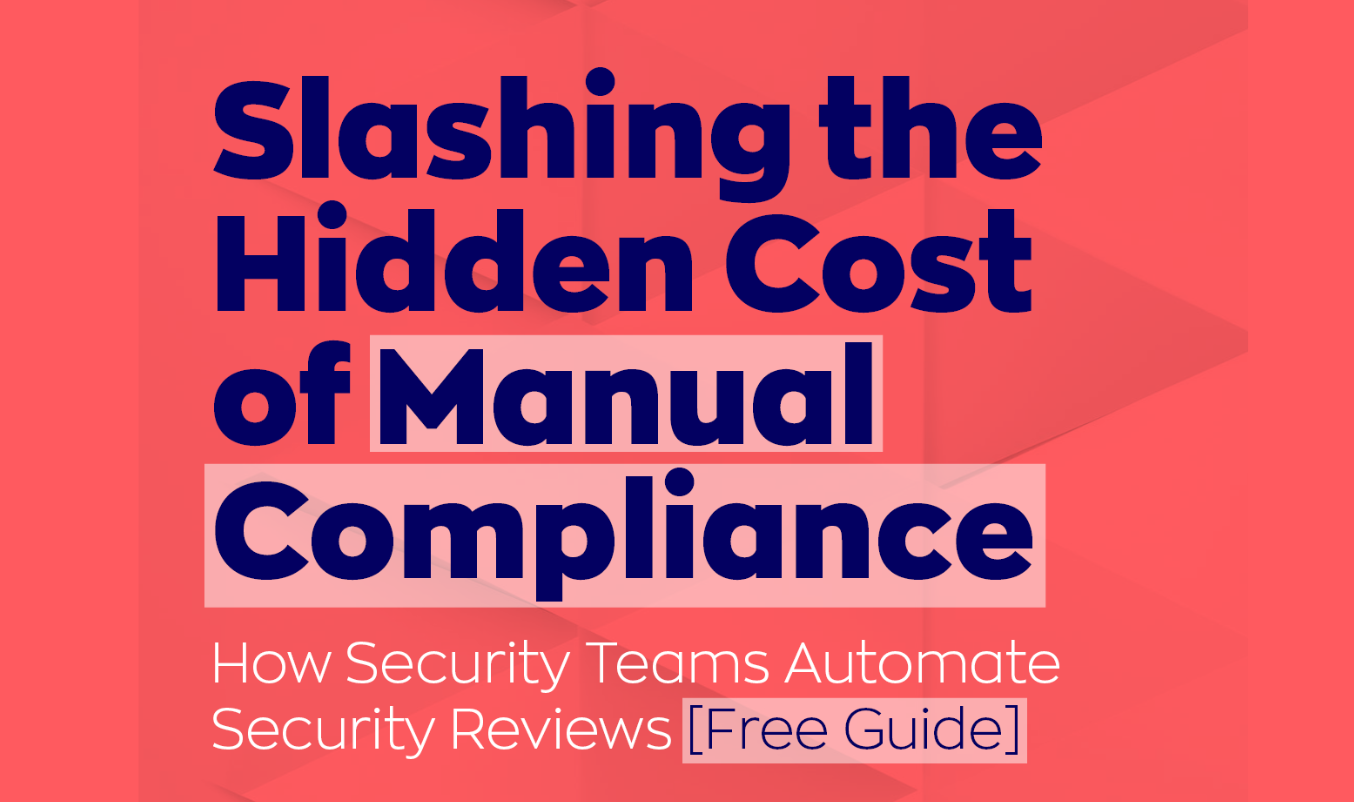How to Perform an Effective Cybersecurity Risk Assessment: A Step-by-Step Guide

As our lives and businesses become increasingly digital, understanding cybersecurity has become a non-negotiable part of operating in the modern world. With the rise of online threats, companies of all sizes have become vulnerable to cyber incidents like data breaches and malware attacks. To combat these risks, a cybersecurity risk assessment is a vital tool.
It's a careful process that helps identify and tackle potential risks to digital assets, allowing businesses to act before threats become realities. Adopting this proactive approach is more than just a strategic move; it's an essential step to ensure business continuity and success in today's digital landscape.
What Does Cybersecurity Risk Assessment Actually Represent?
A cybersecurity risk assessment is a thorough process used to pinpoint, examine, and address potential threats affecting an organization's tech environment. It's an essential check-up of your IT systems and the data they hold, which are vital to your business's operations. The goal isn't just to take a quick look at your defenses; it's to really understand where you might be vulnerable and what problems you could face if something goes wrong.
The reasons for doing a cybersecurity risk assessment are pretty straightforward. It helps you get a clear picture of where your security stands, find out where you're open to risks, and make sure you're following the rules and regulations that apply to your industry. It's also a way to make smart choices about where to spend your money on cybersecurity, ensuring you protect the most important parts of your business.
By going through all parts of your organization's digital world, a cybersecurity risk assessment helps you build a solid strategy that not only deals with threats as they come but also sets you up for safe growth and innovation, keeping your business secure now and in the future.
Main Benefits of Performing a Cybersecurity Risk Assessment
In today's world, where everything is connected, a cybersecurity risk assessment is like your trusty guide through the maze of online threats and risks. It's a critical health check for any business that operates digitally. The main point of these assessments is to dig up any weak spots or potential dangers that could cause serious trouble if they're not taken care of. Spotting these issues early on means you can fix them before they turn into expensive or more complex issues.
Think of a risk assessment as your game plan for staying safe online. It lays out a path for you to follow, making sure that as your business grows and changes, your cybersecurity strategies stay solid and on point. It's not just about fixing what's currently wrong—it's about building a system that's ready for whatever new challenges might pop up. Plus, when you understand the risks you're facing, you can make smarter decisions about where to invest in cybersecurity. This way, you put your money and effort into protecting the parts of your business that need it most.
When it comes to following the rules about data protection, a cybersecurity risk assessment is super important. It helps you make sure you're keeping up with the laws, which is more important than ever with all the strict privacy regulations out there. Staying compliant not only keeps you out of legal trouble but also helps you win the trust of your customers and clients.
In short, doing a cybersecurity risk assessment helps you build a more substantial, more secure business that's ready to face the online world with confidence.
How to Perform a Cybersecurity Risk Assessment
Conducting a cybersecurity risk assessment is a critical step in protecting an organization's information assets. This process involves several key stages:
Scope Definition
Defining the scope is the first and one of the most crucial steps. It establishes the boundaries of the assessment, identifying which systems, data, and processes will be examined. This phase ensures the assessment is focused, manageable, and aligned with the organization's strategic objectives.
Asset Inventory
Next is developing a comprehensive inventory of all information assets, which may include hardware, software, and data repositories. Understanding what needs protection is fundamental to assessing risks appropriately.
Threat Identification
This involves the identification of potential threats to the organization, which could range from internal risks like employee misconduct to external risks such as hackers. It's crucial to also consider human-driven threats like social engineering, where attackers deceive employees to gain access to sensitive information or systems. Identifying these varied threats is key to a thorough risk assessment.
Risk Analysis
Once threats are identified, the next step is to assess the likelihood and potential impact of these risks. This analysis helps prioritize risks based on severity and the organization's risk appetite.
Mitigation Strategies
Based on the risk analysis, develop strategies to mitigate the highest priority risks. This may involve a combination of technical controls, policy changes, and other risk management techniques.
Monitoring and Review
Finally, cybersecurity is not a one-time activity but a continuous process. Regular monitoring and review of the risk landscape are vital as new threats emerge and business objectives evolve.
By following these steps, organizations can ensure a thorough and effective cybersecurity risk assessment, laying the foundation for a strong security posture.
Who Should Perform a Cybersecurity Risk Assessment?
The task of conducting a cybersecurity risk assessment is best approached through a collaborative effort involving various roles within an organization. This multidisciplinary approach ensures a comprehensive evaluation that incorporates diverse perspectives and expertise.
Dedicated In-house Teams
Ideally, an organization should have a dedicated in-house team responsible for risk assessments. This team should include IT staff who are well-versed in the organization's digital and network infrastructure, as well as executives who understand the information flow and business impact.
Chief Information Security Officer (CISO)
The CISO or equivalent security leadership oversees the cybersecurity risk assessment process. They bring a high level of expertise and an ability to prioritize risks based on the organization's strategic goals.
IT Professionals and Security Experts
These individuals conduct the technical evaluation of the cybersecurity landscape. Their technical knowledge is crucial for an in-depth assessment of security controls and vulnerabilities.
Business Stakeholders
Including business leaders in the risk assessment ensures that the outcomes align with the organization's risk tolerance and strategic objectives. Their insights are valuable in understanding the potential business impact of cybersecurity risks.
By engaging a team that includes these roles, organizations can ensure that their cybersecurity risk assessments are thorough, relevant, and aligned with their security posture and business objectives.
What are the Potential Dangers if Cybersecurity Risk Assessment isn’t Performed?
Neglecting cybersecurity risk assessments can lead organizations into treacherous waters, exposing them to a multitude of dangers that could have severe implications.
Heightened Vulnerability to Cyberattacks
Without a comprehensive assessment, organizations may remain unaware of existing vulnerabilities, leaving them susceptible to cyberattacks such as data breaches, malware infections, and more.
Inefficient Resource Allocation
Lack of proper risk assessment can result in misdirected efforts and investments, leading to poor security postures and wasted resources.
Regulatory Non-Compliance
Failing to conduct risk assessments can lead to non-compliance with industry standards and regulations, attracting legal penalties and damaging an organization's credibility.
Financial and Reputational Loss
The aftermath of cyber incidents can be devastating, with financial losses from data recovery, legal fees, and reputational damage due to diminished customer trust.
In summary, the dangers of bypassing a cybersecurity risk assessment are far-reaching, affecting not just the immediate security of an organization but also its long-term viability and reputation.
Bottom Line
In a digital era marked by cyber threats, an effective cybersecurity risk assessment is crucial for protecting your organization. This guide offers a clear pathway for identifying and managing risks, ensuring your business is prepared to defend itself against online dangers. By taking structured steps—from defining the scope to ongoing monitoring—you'll gain a comprehensive view of your cybersecurity situation.
This forward-thinking strategy not only strengthens defenses against current threats but also primes your organization to handle new risks proactively. In the end, regular cybersecurity risk assessments are foundational for a resilient digital presence, allowing your business to operate securely and confidently.
.png)








.jpg)
